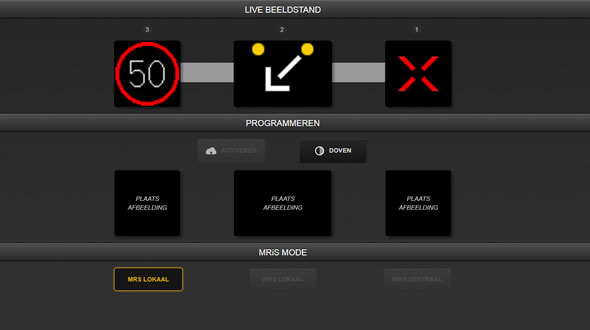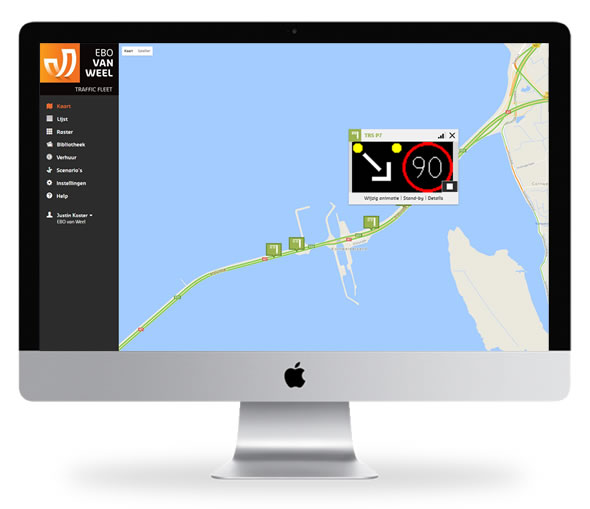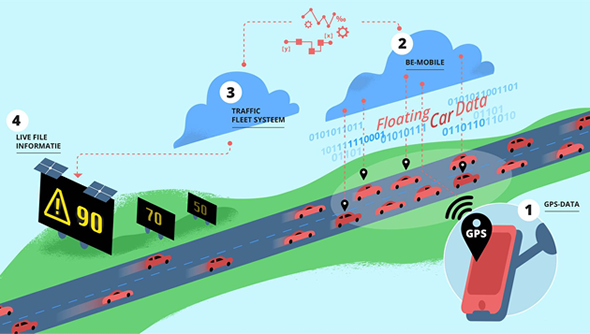MLS and TLS control
Mobile and temporary lane signalling (MLS and TLS) is used on roads where there is no static signalling. During roadworks or incidents, the signalling systems are placed on the road. These matrix signs can be equipped with full-colour VMS’s or VMS’s with a number of predetermined traffic signs.
EBO van Weel has developed various innovative applications for the control and management of lane signaling. It is possible to manage the signaling systems online and to activate automatic traffic jam detection.
Local control with one application
For local signalling control, a user-friendly application has been developed, which works on a touchscreen and/or tablet. The application allows traffic signs to be selected and activated per VMS. In the status menu you will find an overview of the current status data and potential error messages.

Online control over traffic situations
Traffic Fleet is a online platform to control temporary and permanent traffic systems. Because of its simplicity all equipment is within your reach. All systems are, if requested, equipped with secured modems and are therefore able to be controlled in real-time in Traffic Fleet.
By implementing the temporary lane signalling in Traffic Fleet, one can adapt to any traffic situation in an instant. All status information and potential error messages can be retrieved and downloaded in real-time.

Traffic jam detection with Floating Car Data (FCD)
The use of traffic jam detection is not new on the Dutch highways. However, the use of traffic jam detection on variable message signs based on Floating Car Data (FCD) is a new and innovative technique with many advantages. FCD is more accurate than traditional systems because it measures per segment of 50 metres. FCD is therefore able to measure a traffic jam more accurately, which means that approaching traffic can be warned sooner. Ultimately, this all increases the safety of motorists.

Easy co-operation with control scenarios
Traffic engineers and operators of traffic management centres work continuously with predefined control scenarios. The connection makes it possible to program MLS and TLS in such scenarios.
A MLS or TLS can be released to another application in Traffic Fleet for a certain period of time, which makes it visible in the infrastructure of the traffic management centre. During roadworks and incidents, operators can now immediately guide and adapt the scenarios to ensure an unobstructed traffic flow.
